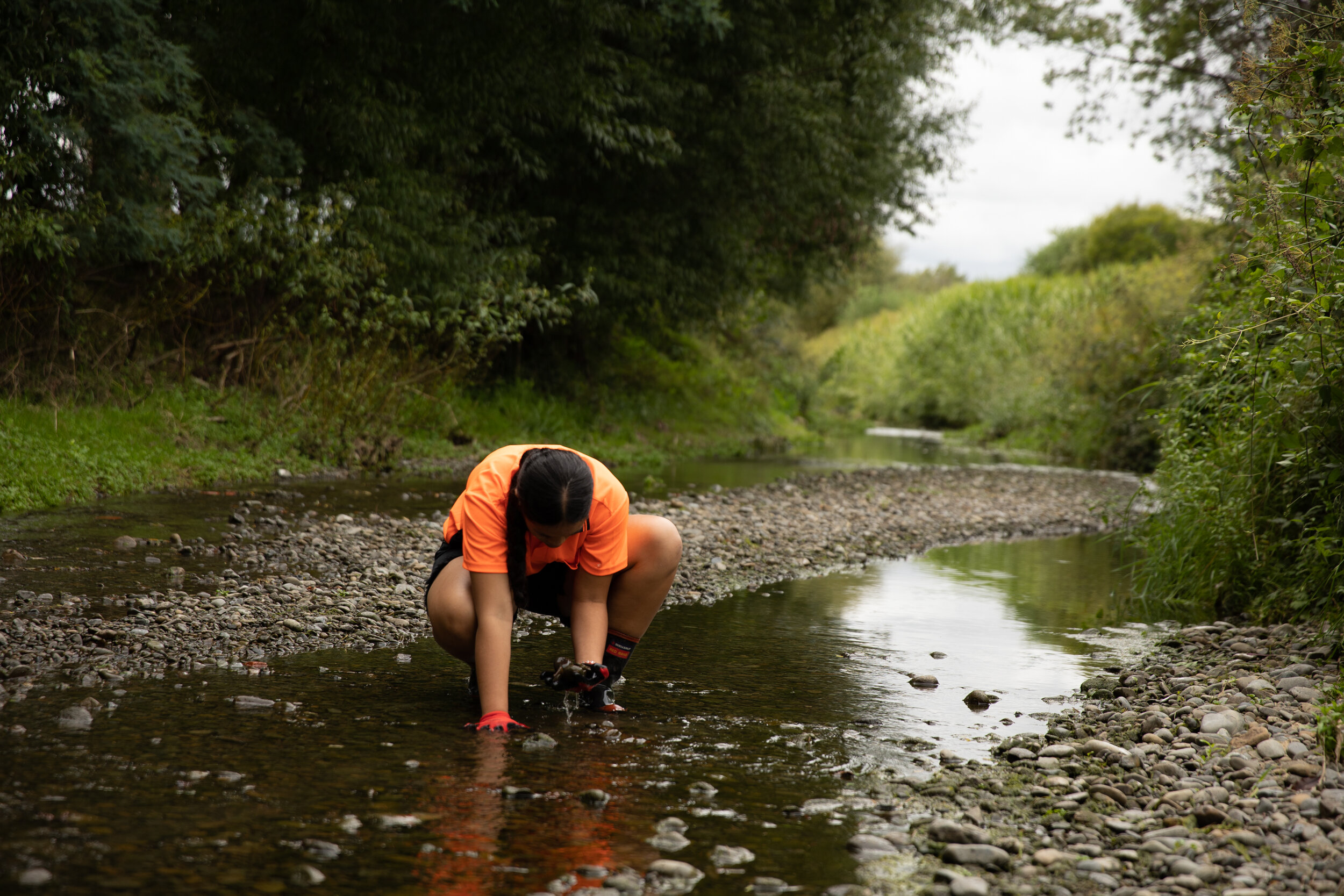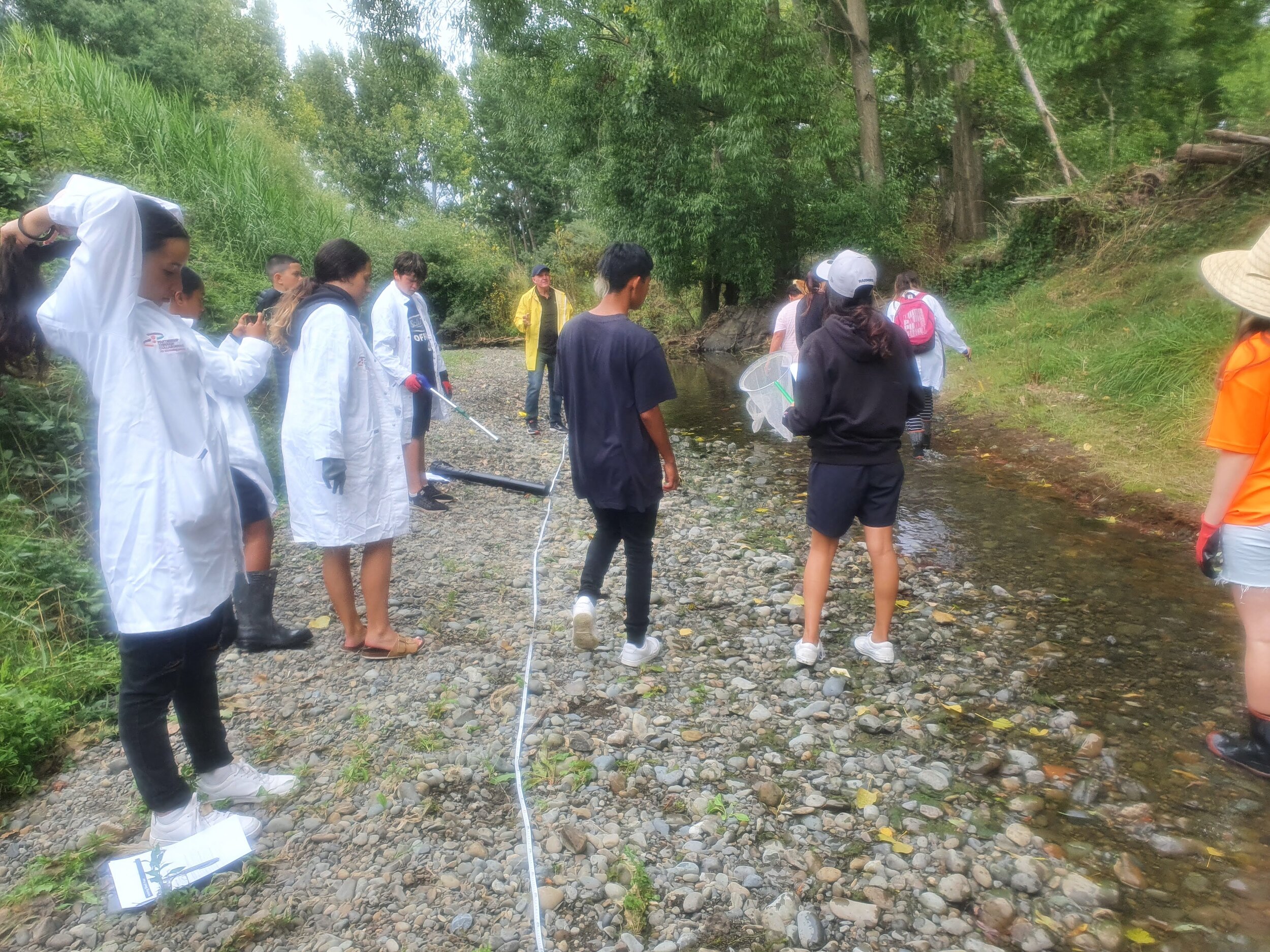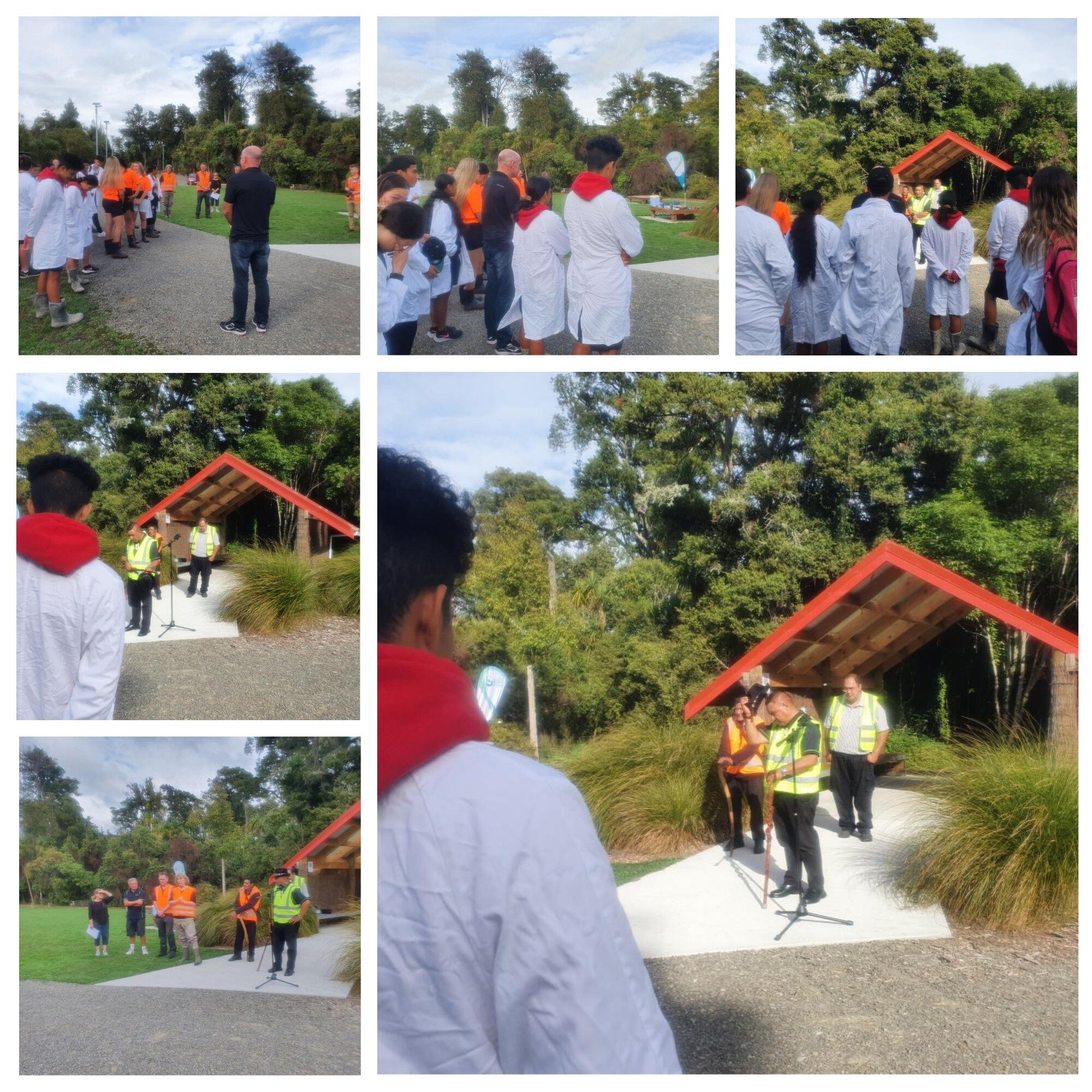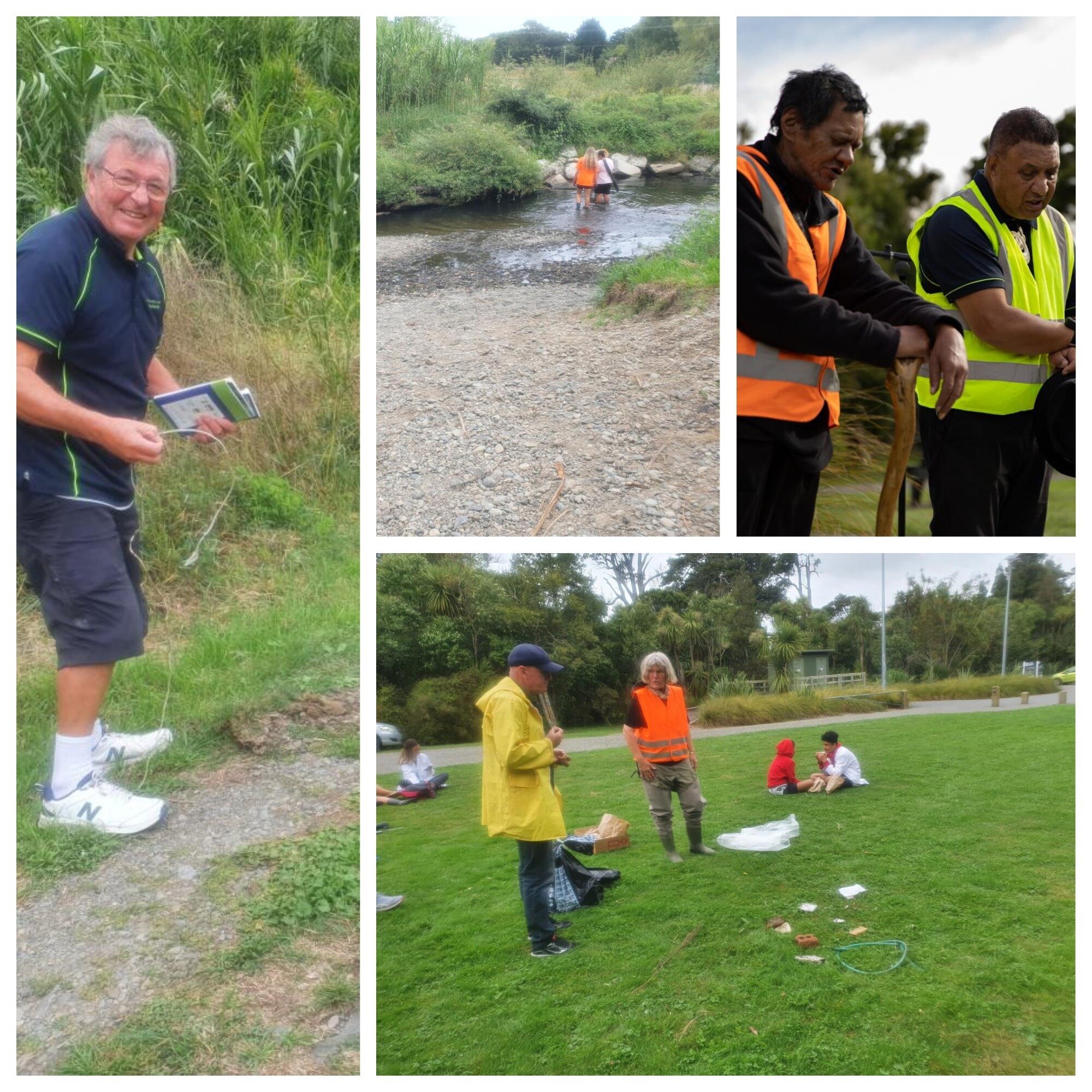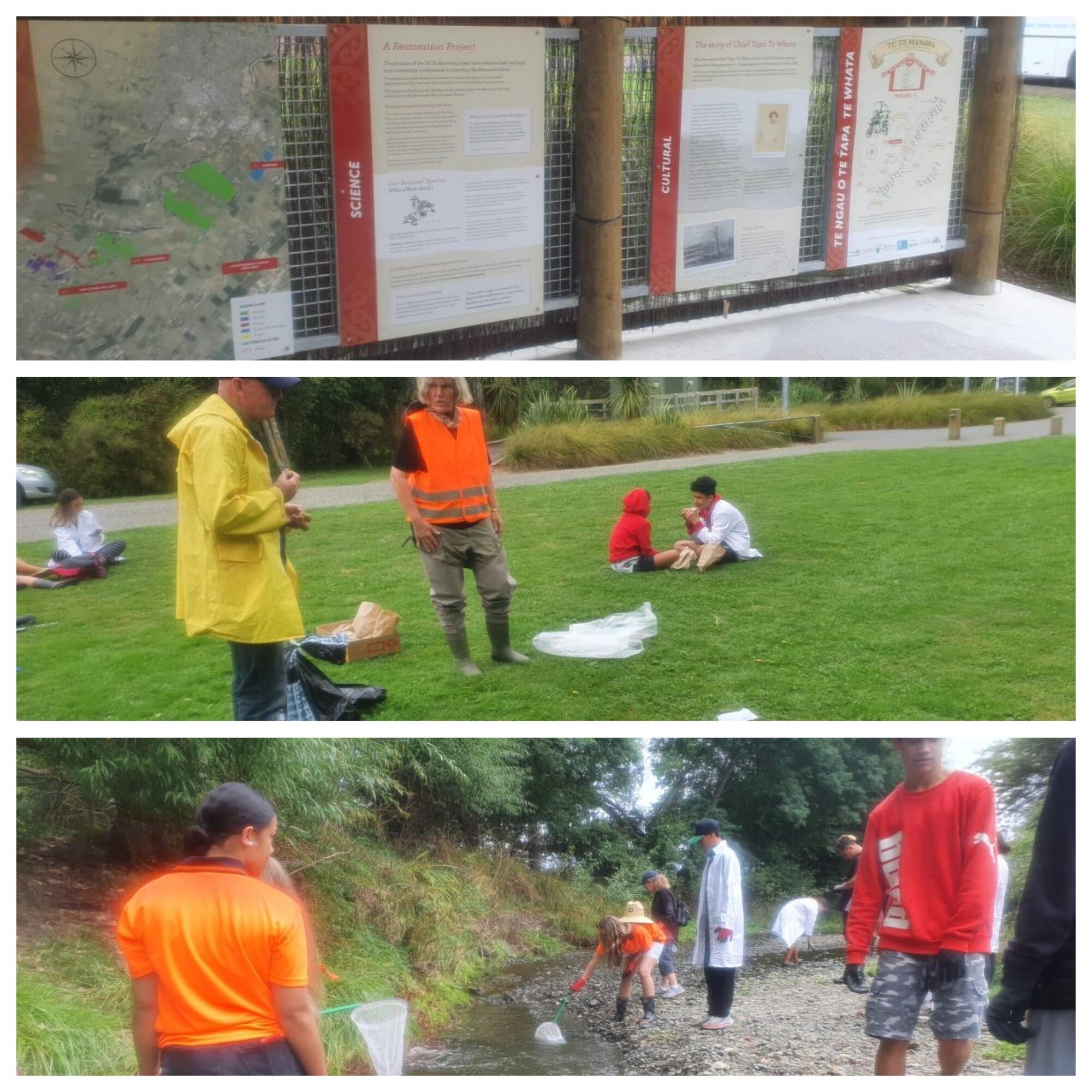Fielding Plastics challenge
PTC Trust collaborated with Environment Network Manawatū (ENM) and local iwi Ngāti Kauwhata to engage rangatahi in the Plastic’s Challenge along the Mangakino Stream, Fielding. According to lead scientists Dr Heike Schiele, (Coordinator Source to Sea Co-Chair ENM) and Ian Rasmussen, Plastic pollution is an urgent global issue on the cusp of constituting a ‘planetary boundary threat’.
Palmy’s Plastic Pollution Challenge (PPPC) was set up in 2019 to understand the scale of plastic pollution going into the Manawatū river via our urban streams and to use this knowledge to improve the health of our local waterways. They are now taking the challenge to Feilding and have randomly selected 100m2 sampling sites along the Mangakino Stream.
Dennis Emery and Team Kauwhata officially launched the project with a blessing and opening ceremony of the Plastic’s Challenge programme at the Kiosk at Awahuri Forest – Kitchener Park.
Tai Wananga Tu Toa students were the first group to get involved in assessing the levels of macroplastics at Kitchener Park Reserve Fielding.
The group was divided into smaller cohorts that touched on the following skills: sampling on Mangakino Stream, Cultural training and monitoring, special beetles research and exploration for tradescantia.
Mike Stone from Awahuri Forest Kitchener Park Trust provided insight and knowledge about our native bush, pests and weeds. These included:
-Bird Groups, for example, fantail and grey warbler.
-Weed groups for example, tradescantia or wandering willie, convululous, fragmitees karka, deadly nightshade, onion weed,ivy,old man's beard.
-Bush groups, for example the damage being done by hedgehogs, tradescantia - suffocating seedlings, trees can be 100s of years old.
This energetic bunch of young leaders are just the type required to ensure NZ native species are preserved and looked after from the deadly impact of plastic pollution. The group then categorised the macroplastics to determine what type of plastic was prevalent whether PET, HDPE, PVC, PP, LDPE etc.
It was awesome that not many of the various types were found across the investigative sites in Feilding.

